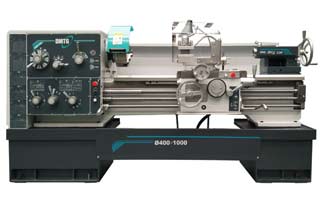Lathe machines are essential tools in various industries, providing immense versatility for both woodworking and metalworking tasks. These powerful machines enable craftsmen and manufacturers to shape and manipulate various materials with precision and efficiency.
Woodworking Applications
Woodworking is one of the primary areas where lathe machines excel. They enable craftsmen to transform raw pieces of wood into functional and aesthetically pleasing objects. Here are some common woodworking applications of lathe machines:
Turning Wooden Spindles
Lathe machines are extensively used for turning wooden spindles. Whether it’s for staircase balusters, table legs, or chair posts, the ability to rotate the workpiece allows for precise shaping and consistent diameter along the entire length of the spindle.
Creating Decorative Woodwork
With lathe machines, artisans can craft intricate and decorative woodwork. From ornamental bowls to decorative vases and intricate wooden sculptures, the rotational motion of the lathe machine allows for the creation of stunning designs and patterns.
Crafting Furniture Components
Lathe machines play a crucial role in furniture production. They are utilized to create components such as chair arms, table legs, and decorative accents. By using lathe machines, manufacturers can achieve uniformity in design and produce furniture pieces with exquisite details.
Metalworking Applications
Apart from woodworking, lathe machines also find extensive applications in metalworking. They provide precision and accuracy when working with various metals. Here are some common metalworking applications of lathe machines:
Precision Metal Turning
Lathe machines excel in precision metal turning tasks. They can shape metal pieces into cylindrical, conical, or spherical forms with exceptional accuracy. This is crucial in industries such as aerospace, automotive, and engineering, where precision is paramount.
Manufacturing Metal Components
In metalworking industries, lathe machines are utilized to manufacture various metal components. From engine parts to shafts, valves, and connectors, lathe machines enable the production of precise and reliable metal components that meet industry standards.
The Advantages of Using Lathe Machines
Lathe machines offer numerous advantages that make them indispensable in both woodworking and metalworking industries. Let’s explore some of the key benefits:
High Precision and Accuracy
One of the primary advantages of using lathe machines is their ability to deliver high precision and accuracy in shaping materials. The rotational motion, combined with the precision controls and cutting tools, allows craftsmen to achieve intricate designs and tight tolerances.
Time and Labor Efficiency
Lathe machines greatly enhance productivity by reducing the time and effort required for shaping materials. The automated rotation and cutting processes enable craftsmen to complete tasks efficiently, leading to increased production rates and reduced labor costs.
Flexibility in Material Selection
Another significant advantage of lathe machines is their versatility in working with various materials. Whether it’s wood, metal, plastic, or even composites, lathe machines can handle a wide range of materials, offering flexibility in material selection for different projects.
Safety Considerations for Lathe Machine Operation
While lathe machines are powerful tools, it’s crucial to prioritize safety during operation. Here are some important safety considerations to keep in mind:
- Always wear appropriate personal protective equipment, such as safety goggles, gloves, and ear protection.
- Familiarize yourself with the specific safety features and controls of the lathe machine you’re using.
- Ensure the work piece is securely fastened to prevent it from dislodging during rotation.
- Use proper cutting techniques and tools to minimize the risk of accidents.
- Regularly inspect the machine for any signs of wear or damage and perform routine maintenance to keep it in optimal condition.
Maintenance and Care for Lathe Machines
To ensure the longevity and optimal performance of lathe machines, regular maintenance and care are essential. Here are some maintenance tips:
- Clean the machine regularly to remove dust, debris, and metal shavings.
- Lubricate the moving parts to reduce friction and prevent premature wear.
- Check and adjust the alignment of the machine’s components for accurate operation.
- Replace worn-out cutting tools and keep a well-maintained tool inventory.
Conclusion
Lathe machines have revolutionized the woodworking and metalworking industries, providing craftsmen and manufacturers with exceptional versatility and precision. From turning wooden spindles to manufacturing intricate metal components, these machines play a vital role in shaping a wide variety of materials. By harnessing the power of lathe machines, artisans can unleash their creativity and achieve remarkable results in their projects.







